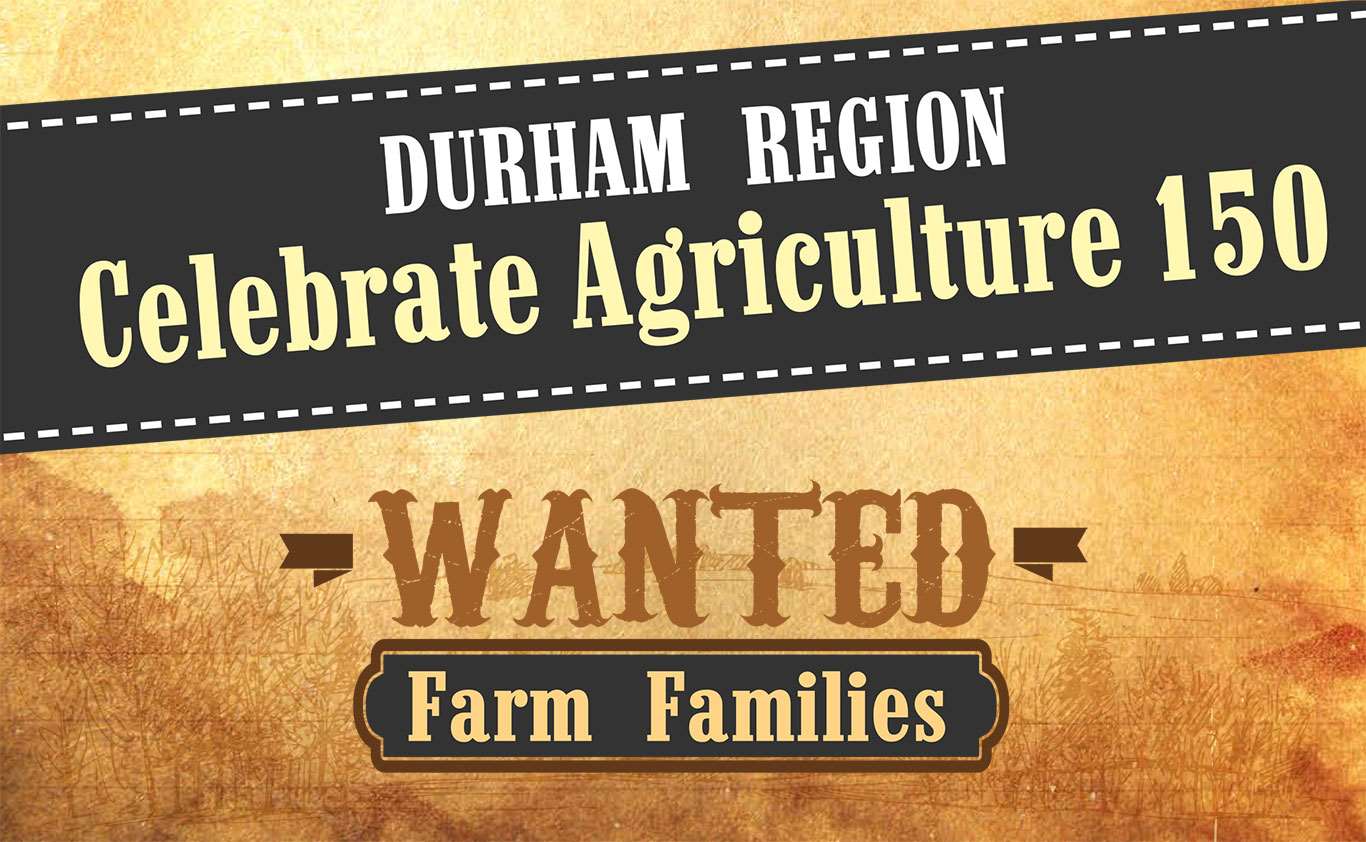Farms older than 150 years being honoured by the DFC
By Kaitlynn Anderson
Farms.com

Durham 150
Families in the Durham region that have been farming since Confederation will be celebrated, thanks to Durham Farm Connections (DFC).
This year, the DFC launched a unique project to honour local farms that have been around for multiple generations – at least 150 years, that is.
Originally, the organization had a goal of paying tribute to a minimum of 65 operations with deep roots in agriculture. However, due to an amazing response from the local community, the organizers are now hopeful of reaching 100 applicants.
“Not only are we celebrating 150 years of Canada,” said Mary Ann Found of DFC, “But we are also celebrating 150 years of commitment to family farm businesses, (as well as) commitment to the soil, air and water.”
This project is also the first of its kind to showcase Durham’s generational footprint in agriculture.
Later this year, participating farm families will be recognized at the Celebrate Agriculture Gala hosted by the DFC on October 26. A sign that reads “Canadian Farm Family 150 Years” will be provided to each family, according to DurhamRegion.com. Event organizers will also show a video about the farm families.
The program will be ongoing, so that more farms may be recognized in the future, according to Found.
Also, each municipal office will feature a plaque recognizing the local farm families celebrating 150 years in the area.
For more agricultural history in celebration of Canada’s 150th birthday, visit our Reflections on Farm and Food History website. You can also find interesting information and contests by searching #cdnaghistory on Twitter.